by Faniry
DETAILED DAY TO DAY PROGRAM
DAY 1: Arrival ANTANANARIVO (TANA)
Fight to Antananarivo. Upon arrival at the airport, you’ll be met and greeted by our English-speaking driver. Then 3 minutes transfer to GASSY COUNTRY HOUSE where we spend our night on B&B
DAY 2:TANA – MORONDAVA – KIRINDY: 60km: 2 hours
Enjoy a fresh breakfast at hotel. Then, ICTours reps will meet you for a briefing of the whole tours. Transfer to the airport and fly to Morondava. Upon arrival, transfer to Kirindy, 60 km of track from Morondava, along the baobabs alley. After check-in, we will have 1-hour hiking in “Kirindy Park” with a guide. Rich on wildlife and home to 8 species of day active lemurs, Kirindy is also home to “the Fossa” the only predator for lemurs and the “Giant Jumping Rat” and the world’s smallest primate as well as dozens of amphibian and reptile species (and no poisonous snakes). At around 6pm, we meet our guide again for a night walk to see night active animals, Overnight in hotel on B&B
DAY 3 :KIRINDY – BEKOPAKA 140 km: 5 hours drive;
The Kirindy boasts more than 60 species of birds, so early morning we have 2 hours hike to look for birds before we take our breakfast. Then around 9.00am, with a 4X4 car, 2 hours drive to Tsimafana through the Baobabs forest and the red soil of the west. We take a Ferry boat transfer to reach Belo. Then head on to Bekopaka for another 4 hours adventure in a dirt track. This drive brings us to Madagascar profound, the bush African side of the country with its dry and red soil. One can experience the real life of Malagasy people in the driest part of the country. Arrival in Bekopaka by end of the afternoon, check-in and overnight in Hotel on B&B
DAY 4:BEKOPAKA: TSINGY DE BEMARAHA NATIONAL PARK
After breakfast, we take a pirogue and sail to the Gorge of Manambolo and just admire its beautiful scenery, its high sandstone cliff. Then have 1 hour walk on the small tsingy and enjoy the panoramic view up on the plateaux. If you are fit enough, you can complete the tours to the “Big Tsingy”. Classified as World Heritage, The National Park of Tsingy de Bemaraha is formed by a huge massif spectacularly eroded into a chaos of karsts pinnacles. Here nature is in perfect harmony with this wild and sharp limestone massif. The flora consists of a dry western deciduous forest, typical plants of these dry limestone areas, such as Aloe and baobab Andasonia, the red-flowered flamboyant tree Delonix regia which is so widely planted in the tropics. Madagascar’s sole native banana Musa perrieri also occurs here. We can also see plants which grow in the stone like different species of pachypodium and orchids. Regarding the fauna, we can see the stump-tailed chameleon Brookesia perarmata known from only a handful specimens. The bird list contains 53 species. The 7 species of lemurs include Decken’s sifaka Propithecus verreauxi deckeni. Night at the same hotel
DAY 5:BEKOPAKA – MORONDAVA 210km
Breakfast at hotel then, cross Manambolo river and take the dirt road to Morondava. Stop in Belo sur Tsiribihina where we cross the Tsiribihina river with a local ferry to reach Tsimafana. From there another 4 hours to reach Morondava. We are in the region of splendid Grandidiers baobab, Andasonia grandidieri. We stop in « ALLEE DES BAOBABS » and enjoy the sunset picture of this unique moment, with its different colours and lights. Night in Hotel on B&B.
Day 6: : MORONDAVA – MANJA: 120 km: 6 hours
After breakfast, we drive southwards to Manja via the road “ Mon ami”, a private road owned by Kanto Hotel where we overnight. We’ll drive across thorny bushes, savannah and typical western villages with small wooden huts. From time to time, we will meet a group of women going to or coming from the local market, bringing goods on their head, many children waving hands to the tourists driving along. We cross the big river of Kabatomena where the car has to drive through the river. Estimated arrival in Manja by the end of the afternoon. It used to be one of the main districts of the west during colonial time as the region is very fertile for corn, rice, beans. Until now we can see some colonial ruined buildings in the centre of Manja. Overnight in hotel KANTO on B&B (a very simple and basic hotel but with toilet and shower)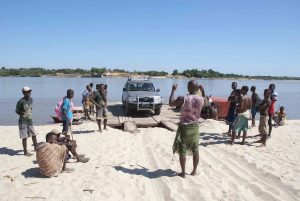
Day 7:MANJA – ANDAVADOAKA: 160 km: 6 – 8hours
Today is another long drive but a rewarding one with beautiful scenery: everywhere we see baobabs, spiny forest. Here we are really in Africa with its bush landscape, its dark feature population. We’ll continue our drive, we take another ferry and cross Mangoky River and reach the town of Bevoay, one of the most important city where a big dam has just been built to water all the fertile plains, the rice and vegetables fields surrounding. Our car has to drive through another 2 small different rivers. The second step is the drive to Andavadoaka via Morombe which takes 4 hours with some stops in between. Estimated arrival by the end of the afternoon. Overnight in hotel on BB
Day 8:ANDAVADOAKA – ANDRAVONA: 80 km: 2 hours with stops
Morning just enjoy the beautiful and eerie scenery around here, the blue emerald sea, its small creeks, the sand, the spiny forest. We drive 4 km and stop in a pond surrounded by huge baobabs, where birds used to drink. In the afternoon, we continue our drive across the coastal line through dunes, sand with nice view of the sea, baobabs, spiny forest, and thorny bushes. Then we pass the most difficult part of the 30 km of sandy road to Befandefa before we reach Andravona, which is another seaside resort north of Tuléar. Arrival in Andravona early in the afternoon, and you can just enjoy the view from the dunes, overlooking the fishermen village, the emerald sea and the lagoon. Overnight in hotel on B&B
Day 9:ANDRAVONA
Andravona lies on a large white sandy beach, and have spiny forest, baobabs on the background which makes it ideal for photography and also for landscape people. If you wish to experience the real life of the primitive tribe “ Mikea”, you can ask the lodge to bring you to the “ Mikéa forest”, a thorny bush with endemic spiny vegetation and baobabs. This forest hosts the last remaining of the Mikea tribe, the only place where we can meet and experience the Mikéa’s life, this primitive tribe who hardly has any contact from outside, who still lives on bees-hunting. Another option is just to enjoy the walk along the Vezo fisherman village and attend the return of fishermen from the sea and watch the animated show of women and children waiting to fetch the fish, a big activity of the day. Overnight in hotel on B&B
Day 10:: ANDRAVONA – ISALO: 280km
After breakfast, we drive to Ifaty. We’ll continue our drive through the same landscape: dunes and sand with nice view of the sea, baobabs. As we drive along the coast line and along the spiny forest, the baobabs and the dunes. From there, we take the National Road 7 till Antananarivo with first stop in Isalo. This step brings us to the interior part of Madagascar, the land of Mahafaly and Antandroy, a tribe from bantoo origin. Along the way we’ll see many tombs of these tribes. We cross the Zombitse Forest, a transition zone between the dry south and the land of Isalo, a formation of continental sandstone rocks. Stop in Ilalaka, a town known for its sapphire and precious stone. Arrival in Isalo, settling and overnight in hotel on B&B
Day 11: NATIONAL PARK OF ISALO
After breakfast, we’ll have a guided half day or full day excursion in the National Park of Isalo, to the famous «Natural swimming pool» or the “canyon” depending on our wishes. This park is very famous for its strange geological formation. Composed with sandstone and eroded by the rain and the wind, this mountain offers the most spectacular scenery of the country. This is also a place where the BARA tribes used to bury their dead until they have enough money to buy a silver coffin. If we are lucky, we will see the lemur catta during this walk. Around 16.30, we’ll drive to the “The Natural window” where we see the beautiful sunset between rocks which look like window. Night in the same hotel on B&B.
Day 12: ISALO – ANDRINGITRA: 225 Km: 6hours with stops
Today we head on to Ihosy the capital of Bara tribes which are shepherds of Zebu. We pass through the huge “plateaux de Horombe” with its very spacious savannah, which reminds us of “the no man’s land”. This is a huge and empty grassy plain. From one place to another we can see some droves of zebus, accompanied by a Bara man with his rifle. We arrive in Ihosy, the land of Bara who are darker –skinned with African features if compared to Merina. They are cattle-raisers and many activities during their life are associated with Zebu. For instance, to get a wife, a man must steal few zebus to show his strength and virility. When they die, they have to kill many zebus as well. The landscape is becoming more and more grandiose. Huge Granite Mountains are imposing themselves in the spacious and empty plains. We feel like being swallowed by this emptiness, by this tranquillity. From a long distance, we can already spot a huge imposing rocky hill called “Bishop’s hat”. This is a sacred place for the local people, no one ever venture to walk down there though it is a nice area for trekking, as it is a burial site and was a place where the local people’s ancestors preferred to make a collective suicide rather than to render to Merina’s domination. Then we will see the “3 hillocks” which area also among the imposing rocky hill. Another spectacular is the huge granite dome with twin rock towers called: “the gate of the south” which marks the beginning of the highland and the end of the south. From there, we take 1 hour of dirt track to reach Andringitra, on the Tsaranoro Valley. Overnight in hotel on B&B.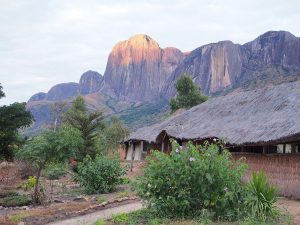
Day 13: ANDRINGITRA:
Walk in Tsaranoro Valley. 35 km of seal road, south of Ambalavao then 25 km of track, in between Tsaranoro massif and the other side of Andringitra massif,Tsaranoro Valley is accessible the whole year round and has the same vegetation, landscape and type of animals that one can find in Andringitra National Park. It is however much hotter and drier here than in the Namoly area, the valley is dotted with mango trees and zebu pastures dominate rather than lush paddy fields. The highlight of Tsaranoro Valley is its landscape and the ring-tailed lemurs which populate the valley. These latter are slightly different in their colour, size, fur if compared to the ones in the south of Madagascar and adapt themselves to the empty rocky environment they live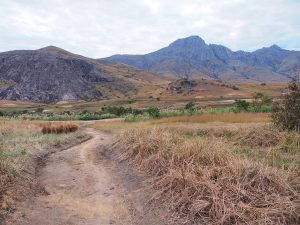
Day 14: ANDRINGITRA – ANTOETRA: 285Km : 6 – 7 hours
After breakfast, we head on to Fianarantsoa the capital of Betsileo tribes. Called “the gate of the South”, Fianarantsoa is the capital of Betsileo tribes. A very catholic city, this is the seat of Jesuits and the best university is found there. We stop in Anja, a park run by the village where part of the income serves to pay the teachers of the local school. The walk will bring you to the forest of Anja where we can admire a large family of lemurs. We arrive in Fianarantsoa by noon. We continue to Ivato Centre, and then take 15 km track to Ambalandingana. Overnight in Sous le Soleil de Mada on B&B
Day 15: ANTOETRA
Hiking in ANTOETRA
Antoetra is known as the capital of Zafimaniry tribe and the starting point of different hike to discover the Zafimaniry world. They are sub tribe of Betsileo, the third largest tribes in the country and the second tribes after Merina in the highland. Zafimaniry lives mainly in the forest and live on forest exploitation. They are the master of wood carving in the country and their huts are made with wooden huts, with carved windows frames, door. Practically all wooden surfaces – walls, window frames, posts, beams, stools, chests, tools – display elaborate ornamentation. Their main characteristic is their high skill on the woodcarvings and wood crafting. They are the sole remaining people, who up till now have kept this unique woodcraft culture which was previously widespread over the whole island of Madagascar. Their art is classified as world heritage by UNESCO. Overnight in Sous le Soleil de Mada on B&B
Day 16: ANTOETRA – ANTSIRABE – TANA :250 Km: 6 hours
Departure to Ambositra after breakfast. Today we come across the highlands, characterised by its terraced rice fields beautifully arranged on the hills, its valleys decorated with wide vegetable plantation, its chilly climate and its Asian featured population. We stop and visit some “Zafimaniry handcrafts atelier” where we can experience this traditional “know how” of wood carving, marquetery, sculptures, which made this tribe very famous of. Continuation to Antsirabe, or “the place of salt “, an elegant city best known as the centre of beer, we can smell the Bewery as we enter the town. With its temperate climate, all fruits and vegetable which grow in cold climate are found in Antsirabe. Known as a city of handcrafts, we will visit some ateliers such as “miniature of bike, old cars of 2 CV, then the zebu’ horn workshop where we can see the transformation of Zebu’s horn into decoration. In the afternoon, we head on to Tana, the final destination of this amazing and complete tour. .
Arrival in Tana by the end of the afternoon, Overnight in hotel on B&B.
Day 17: TANA – FLY OUT:
After breakfast, transfer to the airport for the international flight back home.
END OF SERVICE
INCLUDED
- Transport with private 4WD with driver and fuel.
- Ferry boat transfer in Belo and Bekopaka, Mangoky river
- Accommodation in a double room according to the program above
- All transfer Hotel / Airport /hotel as mentioned in the program
- Entrance fees and special guides for the national and private park mentioned in the program
NOT INCLUDED
- Meals, drinks and personal expenses, insurance
- Optional excursions
Recommended Posts
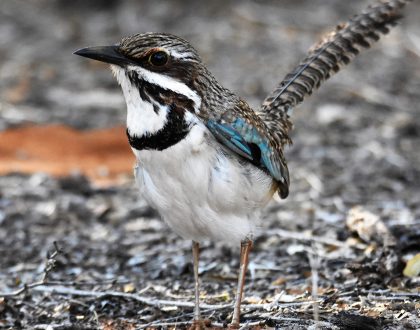
21/ Special interest – Birding tour in Madagascar
August 6, 2018

20/ Madagascar back to the roots
August 6, 2018
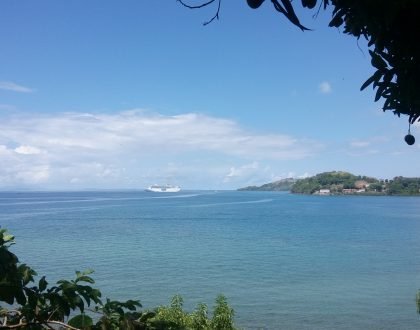
19/ Discover the hidden treasure of Madagascar,
August 6, 2018
